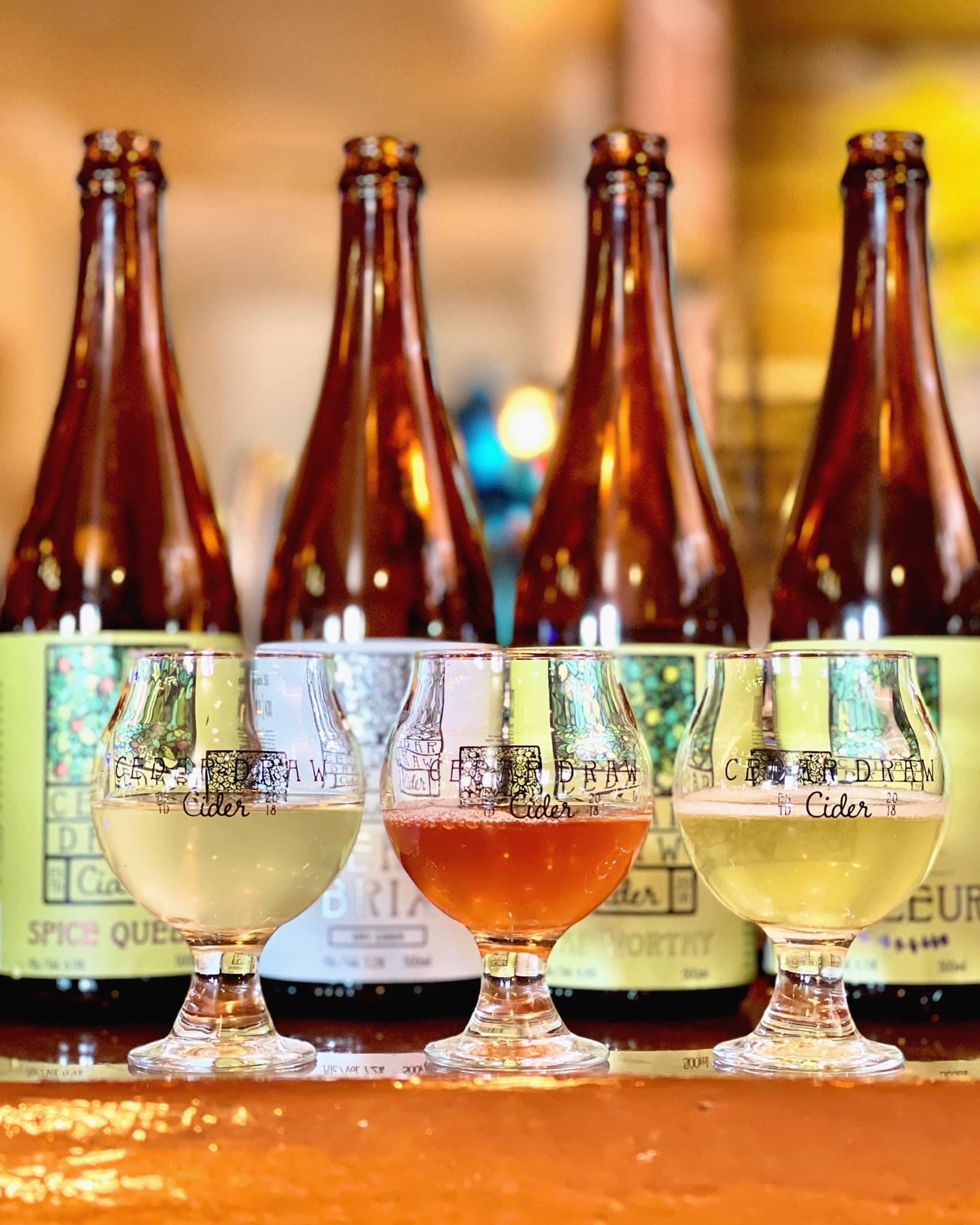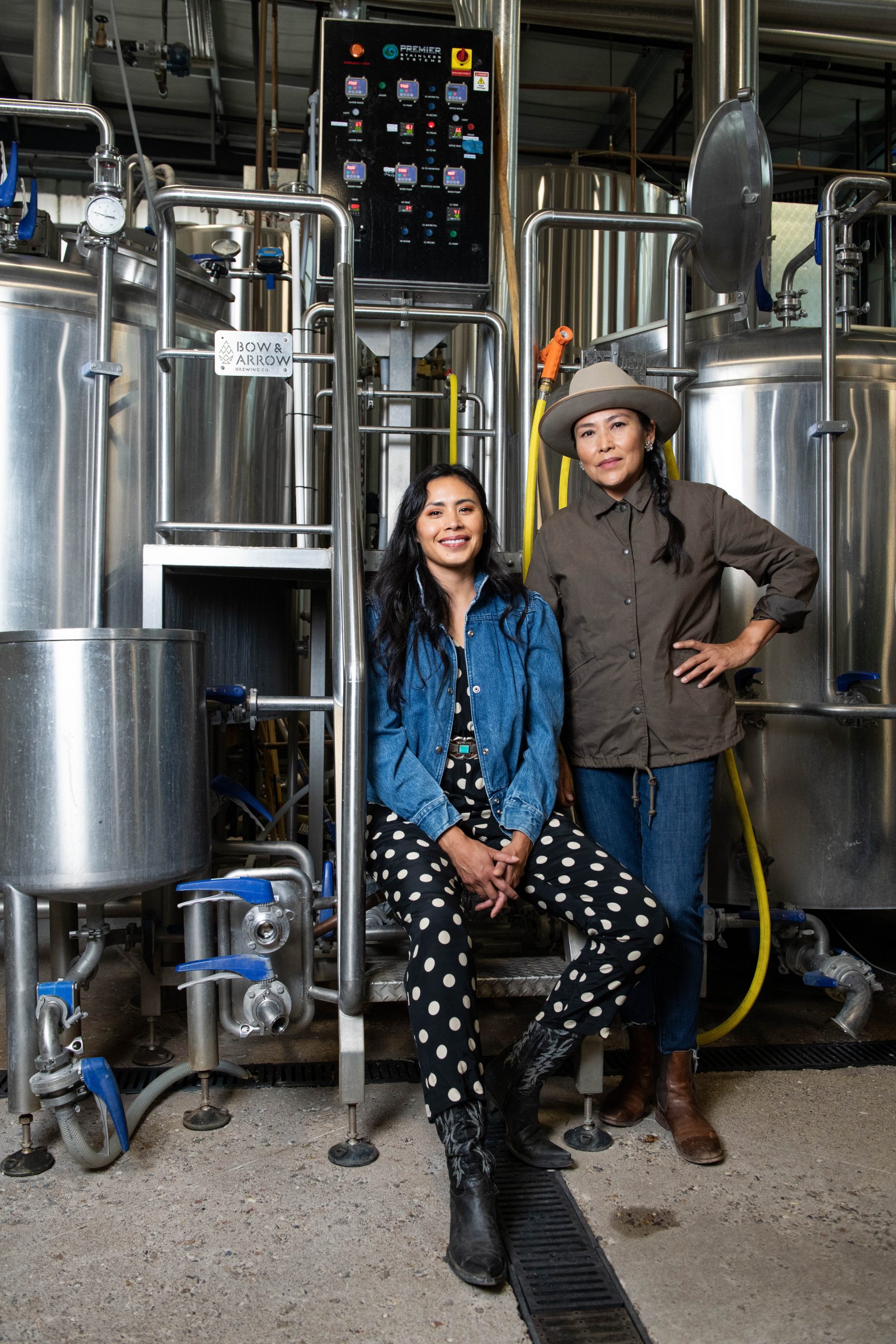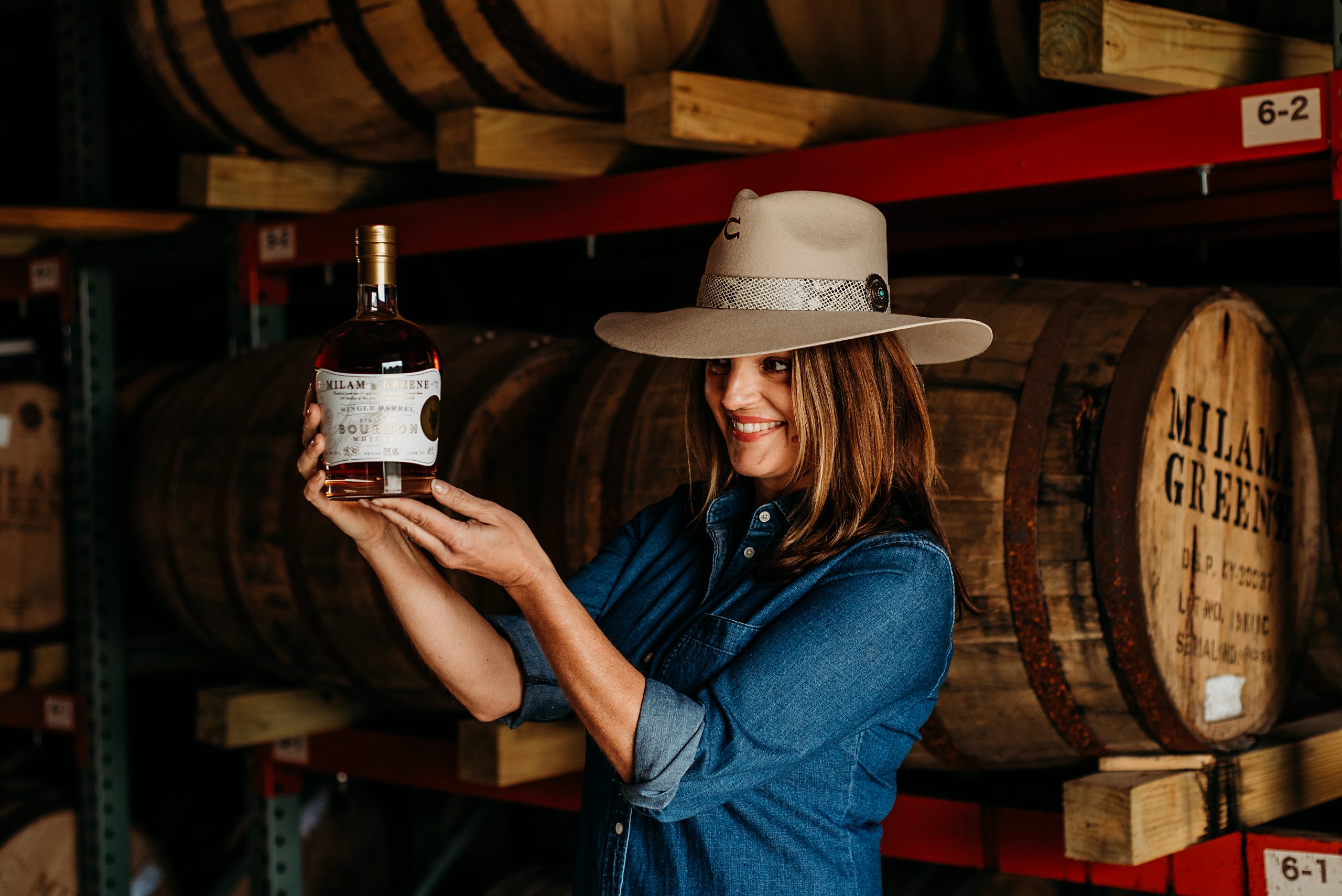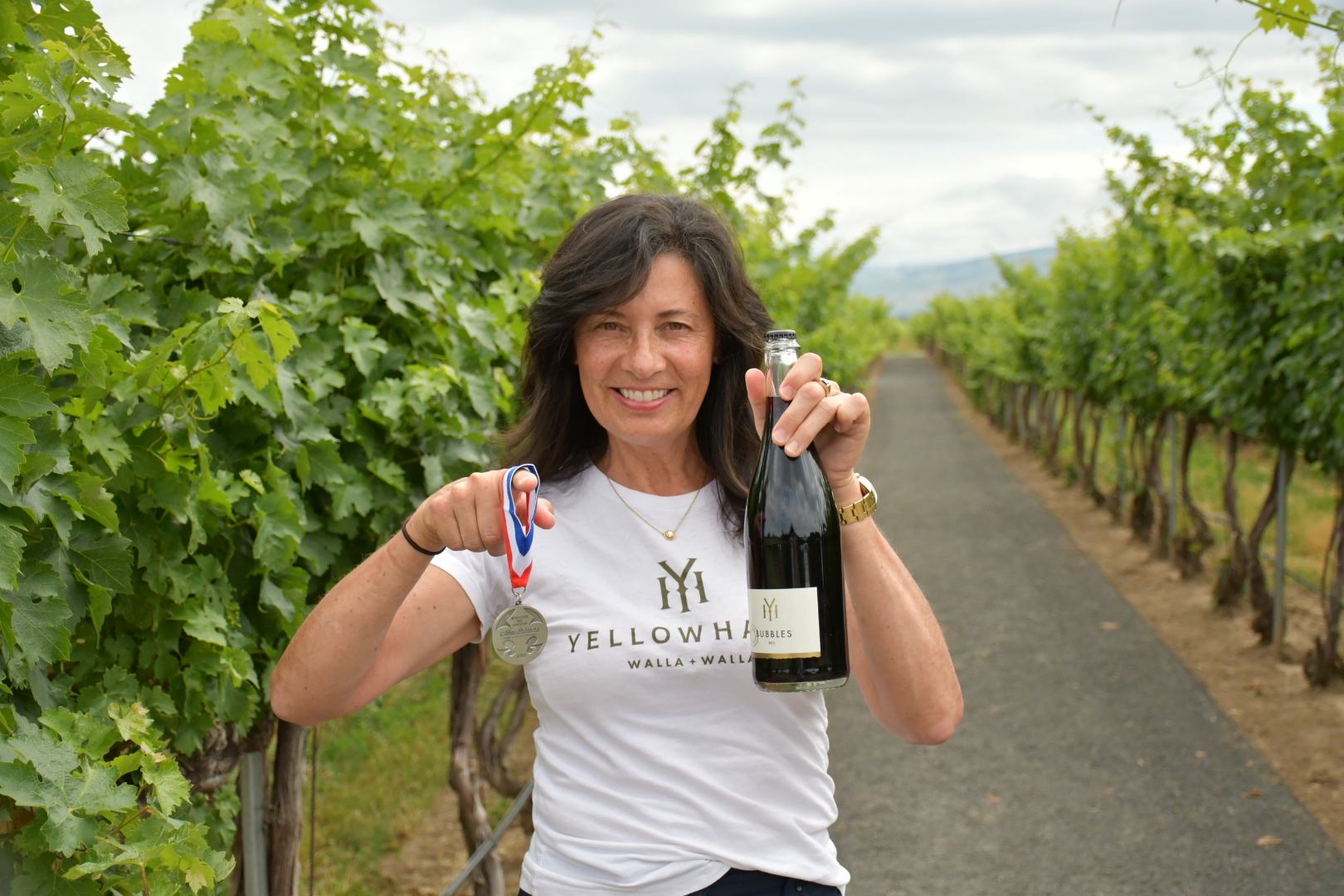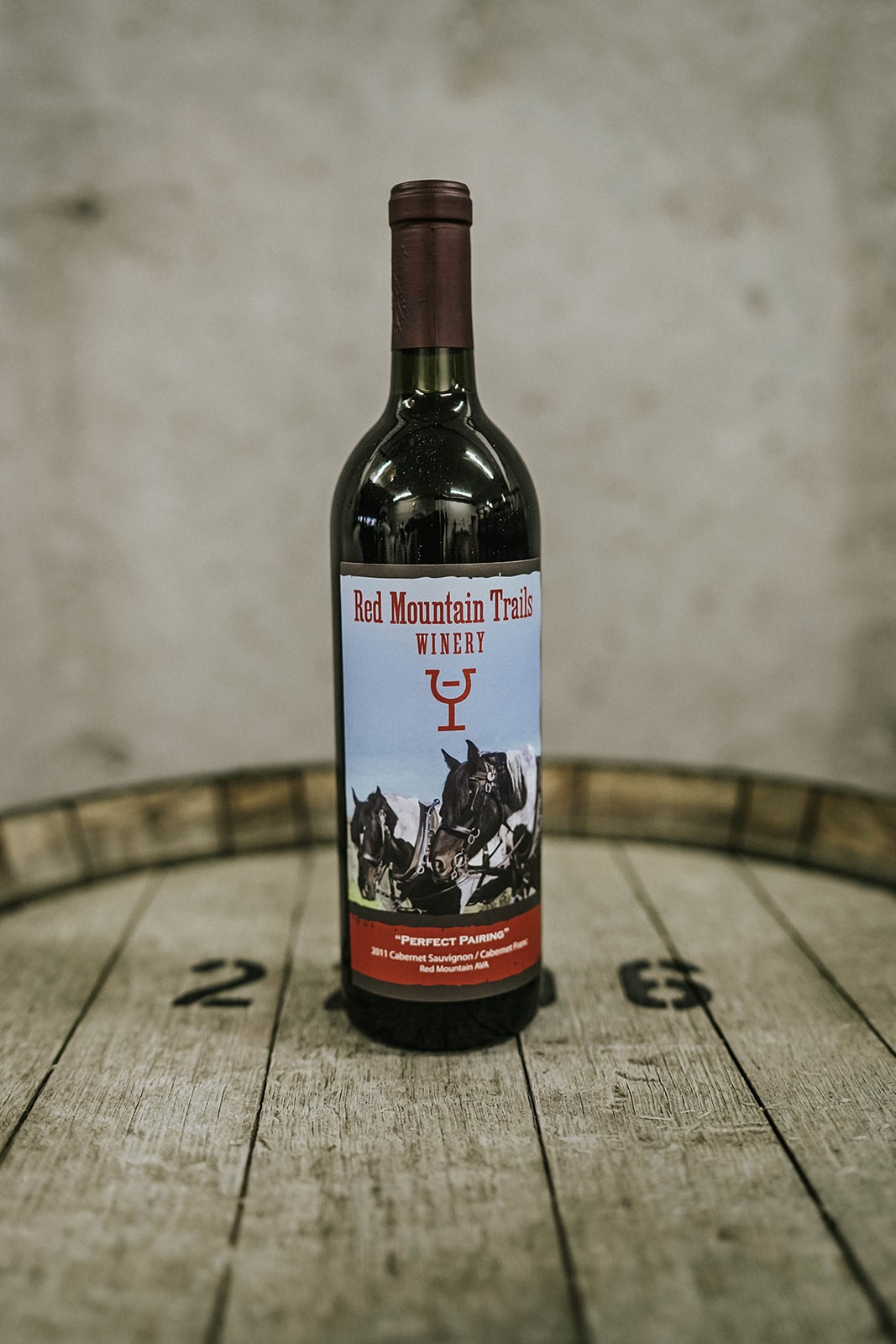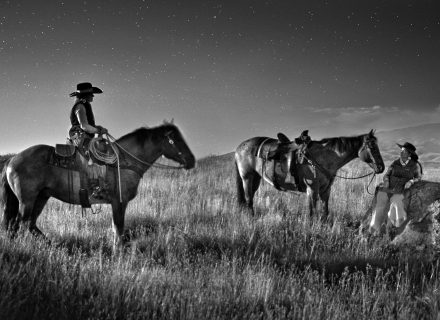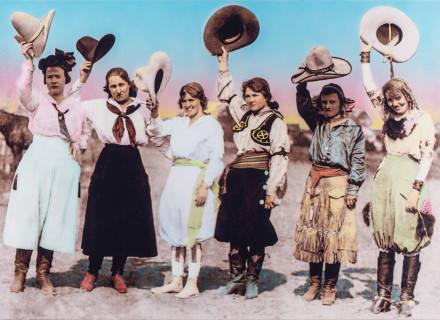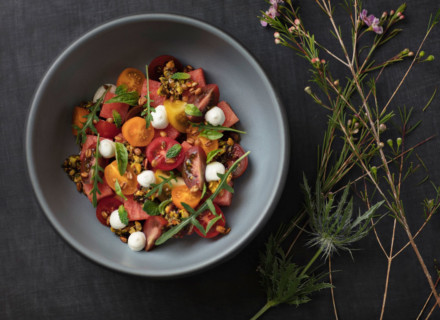Cowgirls and Native American women are expanding the culture and taste of the West with their own takes on cider, beer, spirits, and wine.
The days of sidling up to the bar for a whiskey with your six-shooters on your hip are long gone. Today, drinks culture is more complex and delicious, with women taking the lead in honoring their ancestral heritage, paying it forward for the environment, and bringing good old-fashioned cowgirl fun. Here are some of the trailblazers in the business of brewing, distilling, and winemaking.
CIDER SENSATIONS
First, the basics, and then we’ll get into why you want to know.
Hard cider is apple juice, transformed. To make cider, you start with unfiltered, raw fresh-pressed apple juice. Extraneous pieces of fruit, pulp, and sediment are strained out, yeast is added, and fermentation occurs, producing alcohol and officially creating a “hard” cider. The range of ciders available from that seemingly simple process, however, is profuse, thanks to the thousands of varieties of apples and producers with their own way of blending, fermenting, and aging those apples.
We’ve got a lot of practice, after all: Humans have been turning apples into cider for millennia. According to archaeologists, we have been enjoying hard cider in some form since 6500 B.C.
In the northwestern corner of the United States, however, there has arguably never been a better time to drink your apples than today. In just over a decade, the number of cideries in the Pacific Northwest increased from 10 to 200, a 2000 percent bump — and many of the personalities shaping the delicious and diverse scene happen to be women who are forging a path in a young industry.
“About 50 percent of the cideries in the Northwest are owned and worked by women,” says Northwest Cider Association’s executive director Emily Ritchie. “Other alcohol industries are far below that number.” Indeed, the percentage of female winemakers in California, which produces more than 80 percent of the nation’s wine, hovers around 14 percent. A recent competition called the Northwest Cider Cup, which was organized by the Northwest Cider Association, pitted 51 cideries against each other in a blind tasting and demonstrated how far the industry has come — and how much women define and shape it.
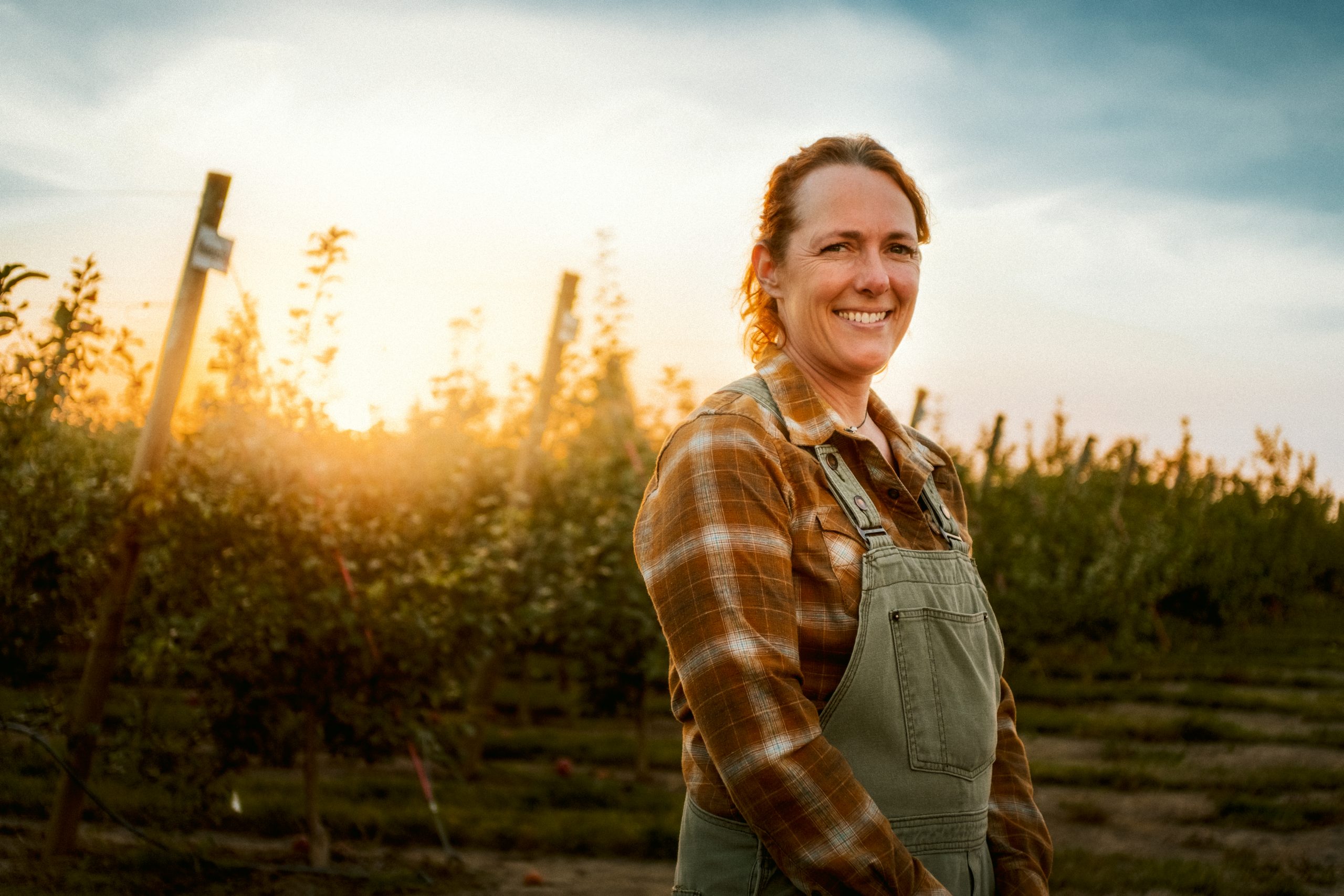 Owner and head cider maker Chrstine Walter of Bauman's Cider.
Owner and head cider maker Chrstine Walter of Bauman's Cider.
“I launched Bauman’s Cider in 2015 in a corner of the barn on my family’s farm near Woodburn, Oregon,” says Christine Walter, who won the “Best Medium Cidery” award at the cup. “Now we’re producing around 100,000 gallons of cider a year, much of which comes from apples grown on my family’s farm or from our neighbors in the Willamette Valley.”
Walter says Bauman’s Cider distinguishes itself by emphasizing farm-to-glass ingredients, with minimal processing; she’s also grateful that she has the opportunity to forge her own path in a still-nascent industry. “Women benefit greatly because the cider industry in America is a lot less rigid in structure and tradition than many,” she says. “That levels the playing field, and anyone with the inclination and creativity can jump right into the ring.”
Cedar Draw Cider’s Emily Mason concurs. Mason won gold in the specialty category for her Sour Empress. The Idaho-based cidermaker works alongside her husband, John, who is the tasting-room manager. Mason says she started her nano-cidery after making her first “cider” from a 100-year-old Italian plum orchard growing on their three-acre farm. Now she’s producing around 4,000 gallons of cider a year. “It started as a creative outlet, but it evolved quickly during the pandemic,” Mason says, adding that the cider community opened its arms to her project. “The Northwest cider community is all about inclusion. It fosters growth and increases the number of women who, like me, decide to pursue a career in cidermaking.”
Nancy Bishop, the cidermaker who snagged Best of Show for her Glow Airlie Red-Fleshed Single Varietal cider, owns Alpenfire Cider in Port Townsend, Washington. “The dynamic women who were either making or promoting cider in the early days have led to the women-friendly vibe of the industry, at least here in the Northwest,” she says. Bishop launched Alpenfire in the early 2000s and says that while the production is small — under 10,000 gallons — its spirit is mighty. “Our mission has never wavered,” she says. “We want to make the best possible cider using certified organic cider apples we grow and other local organic apples. Our focus is on traditional styles. The first time we pressed these Arlie apples more than a decade ago, we knew we had something special. It’s great to see it get the attention it deserves.”
It is also rewarding to see women get the opportunity to make these delicious drinks and to be recognized for their contributions. alpenfirecider.com, baumanscider.com, cedardrawcider.com, nwcider.com
CRAFTY BEERMAKERS
Bow & Arrow Brewing Co.
This Albuquerque, New Mexico, brewery was founded in 2016 by Shyla Sheppard, a member of the Prairie Chicken clan, and of Mandan, Hidatsu and Arikara descent. She founded the brewery — the first Native woman-owned brewery in the country, she says — to honor and share her heritage with beer lovers across the country. One of her brews, Native Land, is a collaboration with other producers who brew the beer using her recipe and template and pledge to donate sales to Native American nonprofits focused on ecological stewardship.
“I see this as more than just an acknowledgment of the Native Land we live and brew on,” Sheppard says. “It also creates awareness that Native Americans are not only an important part of this country’s history, we are still here.” So far, 47 breweries across 23 states and two Canadian territories have participated, and $90,000 has been raised. Taste the heritage in Native Land: The current iteration is a Mexican-style lager made from blue corn, with notes of light caramel and orange blossoms. bowandarrowbrewing.com
Native American Brewing
As a Native American female entrepreneur, Collette Coggins is used to being a leader. She was appointed to the Alcoholic Beverage and Control Commission, campaigning to legalize selling alcohol on the Cherokee Reservation in Cherokee, North Carolina, aiming to grow economic opportunities for her people while combatting stereotypes.
“We had the passion to bring the new business to spring our people forward and to prove that not every [Native American] is just a drunk. Making alcohol has been part of our history forever, so my husband and I have always been interested in it,” Coggins says.
After leaving the commission, Coggins embraced her fascination with craft brewing by opening Native American Brewing. “When you’re a woman in business, you’ve got to be prepared to fight every day,” she says. That fight has paid off in the company’s success. Native American Brewing crafts beer and spirits while honoring Coggins’ great grandfather, a medicine man, and her community. The red hand in the logo conveys health, long life, and prosperity.
If you’re in the vicinity taking in Great Smoky Mountains National Park and the Museum of the Cherokee Indian, stop in at Coggins’ Native Brews Tap & Grill, where the bar might be serving up The Warrior Blonde Ale, Smokey Mountain Golden Ale, Flaming Arrow IPA, Smoke Signal Hazy IPA, Woven Walnut Stout, Native Hard LemonAde Spiced Ale, Sunrise Hard Vanilla Spiced Ale, Native Hard Root Beer, and their own handcrafted vodka, gin, and whiskey. The restaurant will take your order for everything from peanut-encrusted trout, fried Brussels sprouts, and cheese curds to a Bourbonzola burger, country fried steak, and fried Oreos. native-brews.com
— Lindsay Whelchel
WHISKEY WOMEN
Milam & Greene Distillery
Created by founder Marsha Milam, whiskey expert and master blender Heather Greene, and Kentucky veteran master distiller Marlene Holmes, Texas-based Milam & Greene boasts multiple gold, double gold, and platinum awards from credible spirits competitions and gets high marks from Wine Enthusiast. In 2021, it was awarded the People’s Choice Award at the Texas Whiskey Festival and Best in Show (out of 550 entrants) at the American Craft Spirits Association.
Among other crafted creations from this distillery in Blanco in the Texas Hill Country is a line of limited-release, cask-strength single-barrel whiskey dedicated to bottling the wild, mercurial weather of Texas. Dubbed the Texas Wildlife Release, the bottling is an attempt by master blender Heather Greene and master distiller Marlene Holmes to answer the question “How does weather affect aging whiskey?” Between high heat, ice storms, wild temperature swings and drought, the weather has required some Texas two-stepping.
“Hill Country, Texas, imprints an incredible amount of personality onto our whiskies and who we are,” Greene says. “The wily Texas temperatures, varying humidity levels, sunlight, water, and air all mingle to create magic on the whiskey itself. But there is something more ethereal than that, even. Like hiking and walking in the hills, which I do just about every day, making whiskey allows my spirit to slow down and observe all the quiet elements that influence the liquid in a cask over many years.”
Get a taste of Texas wildness with the Wildlife Collection’s Scorpion Single Barrel Bourbon, bottled at 123.3 proof, with notes of maple glazed donuts, bold pepper, candied orange peel, Texas heat and heft. milamandgreenewhiskey.com
WINE, WOMEN, AND STRONG
Yellowhawk
“We are moving toward our third harvest,” says George-Anne Robertson, director of wine and winemaker for Yellowhawk, the only sparkling-wine house in Walla Walla, Washington. “The fact that I am a winemaker at a winery named for a chief who belonged to a subgroup of the Lakota Sioux tribe is a coincidence but also a source of pride for me because my maternal grandmother was born on a Sioux reservation in Saskatchewan. There was always a stigma attached to Native ancestry, so it is only quite recently I have felt pride in learning about and embracing my Indigenous heritage.”
In addition to the winery, Robertson says, Yellowhawk has a restaurant and tasting room where you can taste flights and bottles of sparkling wine or enjoy brunch on the weekends and lunch Thursday through Monday (May through October). And then there’s the big annual two-day bash called Shindig, with plentiful wine, food, and music. You can party without worrying about driving home—in the near future, the resort will include beautiful cottage lodging, too.
Yellowhawk is like a tribe, Robertson says. “We work together and build ideas and make it happen. Whether it is wine, food, or lodging, we are proud of the land we farm on, proud to share food with others, and proud to offer genuine hospitality to anyone that comes our way.” yellowhawkresort.com
Red Mountain Trails
The winemaking at Red Mountain in Washington is serious, but the experience is freewheeling fun. “The Western lifestyle for me is about bootstrapping, creative problem-solving, and using ingenuity to do what you love,” says founder Teresa Owen, who grew up on Red Mountain in a house her parents built with a “two-seater outhouse.” The outhouse is gone, but the spirit of “community, shared experience, and foolish optimism” remains.
Try a little foolish optimism on for size with one of Owen’s now-legendary horseback trail-riding experiences at the winery or a horse-drawn wagon ride through Red Mountain’s vineyards at sunset. Owen will explain vineyard and farming practices and set a picnic for you amid the vines. Finish with a rollicking and indulgent s’mores session. Get a taste of the Red Mountain with 2011’s Perfect Pairing, a blend of cabernet sauvignon and cabernet franc. You’ll find black cherries, blackberries, light spice, with smooth and lush textures. redmountaintrailswinery.com
This article appears in our October 2023 issue, available on newsstands or through our C&I Shop.







